Modern Russian weapons. New weapons of the Russian army
Armed forces Russian Federation were formed in 1992. At the time of creation, their number was 2,880,000 people. Today it reaches 1,000,000 people. This is not only one of the largest armed forces in the world. Armament Russian army today it is very modern, developed, has stocks of nuclear weapons, weapons of mass destruction, a developed system for countering an enemy offensive and redeploying weapons if necessary.
The army of the Russian Federation practically does not use foreign-made weapons. Everything you need is made in the country. All military equipment and weapons are the result of research by scientists and the functioning of the defense industry. The army is controlled by the Ministry of Defense of the Russian Federation through military districts and other command and control bodies. Also created to control the Russian Armed Forces General base, whose tasks are defense planning, conducting mobilization and operational training, organizing reconnaissance operations, etc.
Armored vehicles
Military equipment and the weapons of the Russian army are constantly being modernized. This happens with vehicles such as armored personnel carriers, infantry fighting vehicles and BMD. They are intended for combat operations on various types of terrain, and are also capable of transporting a combat detachment of up to 10 people, and overcoming water obstacles. These vehicles can travel both forward and reverse at the same speed. 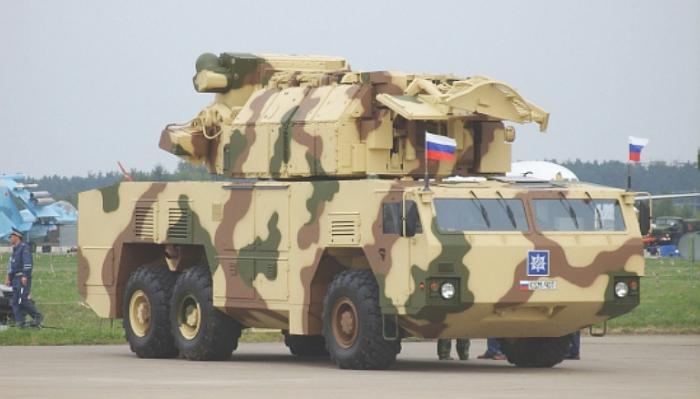
So, at the beginning of 2013, the BTR-82 and BTR-82A entered service with the Russian army. This modification has an economical diesel generator set, is equipped with an electric drive with a stabilizer to control the gun, a laser sight. The designers have improved reconnaissance capabilities, the fire extinguishing system and fragmentation protection have been improved.
About 500 BMP-3s are in service. This technique and the weapons it is equipped with have no equal in the whole world. Infantry fighting vehicles are equipped with mine protection, have a strong and sealed hull that provides all-round armor for protection personnel. The BMP-3 is an airborne amphibious vehicle. On a flat road speeds up to 70 km / h. 
Russian nuclear weapons
Nuclear weapons have been adopted since the days of the USSR. This is a whole complex that directly includes ammunition, carriers and means of movement, as well as control systems. The action of the weapon is based on nuclear energy, which is released during the fission reaction or nuclear fusion.
New today is the RS-24 "Yars". Developments on it were started under the USSR in 1989. After Ukraine refused to develop it jointly with Russia, all design developments in 1992 were transferred to MIT. By design, the Yars missile is similar to the Topol-M. Its difference is a new platform for breeding blocks. On the Yars, the payload has been increased, and the hull has been treated with a special compound to reduce the impact of a nuclear explosion. This missile is capable of performing programmatic maneuvers and is equipped with a missile defense system. 
Pistols for the army
Pistols in the troops of any kind are used for close combat and personal self-defense. This weapon gained popularity due to its compactness and light weight, but the main advantage was the ability to fire with one hand. Until 2012, pistols in service with the Russian army were used mainly by Makarov systems (PM and PMM). The models are designed for 9 mm cartridges. The firing range reached 50 meters, the rate of fire was 30 rounds per minute. Magazine capacity PM - 8 rounds, PMM - 12 rounds.
However, the Makarov pistol was recognized as obsolete, and a more modern model was adopted. This is the Swift, developed jointly with the special forces. In terms of its technical characteristics, the pistol surpasses the world-famous Glock. Another pistol that the army of the new Russia adopted in 2003 was the SPS (Serdyukov self-loading pistol).
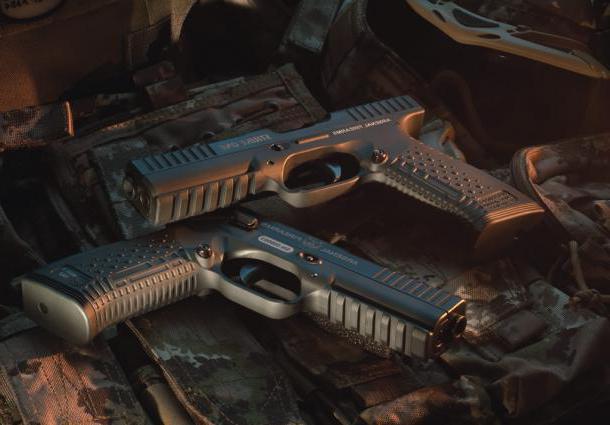
9-mm cartridges with small ricochet bullets, as well as armor-piercing ones, were developed for it. It is equipped with a special spring to speed up the change of a double-row magazine and two safety valves.
Aviation
The armament of the Russian army in terms of aviation makes it possible to provide protection and attack on the enemy, as well as to carry out various operations, such as reconnaissance, security and others. Aviation is represented by aircraft and helicopters for various purposes.
Among the aircraft, it is worth noting the Su-35S model. This fighter is multifunctional and highly maneuverable, it is designed to strike at moving and stationary ground targets. But its main task is to gain air supremacy. The Su-35S has engines with more thrust and a rotary thrust vector (product 117-S). It uses a fundamentally new on-board equipment - the aircraft information and control system provides the maximum degree of interaction between the pilots and the machine. The fighter is equipped with the latest Irbis-E weapons control system. It is capable of simultaneously detecting up to 30 air targets, firing up to 8 targets without interrupting ground and air surveillance.
Among helicopters, the KA-52 "Alligator" and KA-50 "Black Shark" should be noted as modern weapons of the Russian army. These two combat vehicles are a formidable weapon, so far not a single country in the world has been able to create and oppose equipment that matches them in terms of tactical and technical capabilities. "Alligator" can operate at any time of the day or night, under any weather and climatic conditions. "Black Shark" is designed to destroy various armored vehicles, including tanks, as well as to protect ground facilities and troops from enemy attacks. 
Vehicles
The equipment of the Russian army with vehicles for various purposes is large-scale. Automotive equipment is presented in the form of highly mobile, cargo-passenger, multi-purpose, specially protected and armored.
The STS "Tiger", adopted by the Russian army, has proven itself especially well. The car is used for reconnaissance operations, surveillance of the enemy, transportation of personnel and ammunition, patrolling high-risk areas, and escorting mobile columns. It has high maneuverability, a large power reserve, good visibility for firing. 
For the operational transfer of equipment, ammunition and personnel in large quantities, the KRAZ-5233BE "Spetsnaz" is used. The car is designed for work in harsh climatic conditions (from -50 to + 60 degrees), has a high cross-country ability - it can overcome water barriers up to 1.5 m deep and snow covers up to 60 cm high.
tanks
Tanks are armored fighting vehicles and are used by ground troops. Today, the T-90, T-80 and T-72 models are used in the Russian army. Modern armament with tanks outnumbers the equipment of the army of the United States of America.
The T-80 has been supplied to the army since 1976, since then it has gone through several modifications. It is used to support the destruction of people and various objects (for example, fortified firing points) with firepower, to create defensive lines. It has multilayer armor, increased maneuverability. It is equipped with a 125-mm cannon coaxial with a machine gun, a Utes machine-gun system, a smoke grenade launcher, and an anti-tank missile control system. 
The T-90 tank, especially the T-90SM modification, can be safely positioned as the latest weapon of the Russian army. Equipped with an improved fire extinguishing system, an air conditioning system has been added, it is possible to hit moving targets with high accuracy while moving. In all characteristics, it surpasses such tanks as the Abrams or Leopard.
Machine guns in service with the army
The most famous weapon of the Russian army is this. And although they do not have grace or beauty, they have earned popularity for their simplicity and ease of use. This assault rifle traces its history back to 1959, when it was first put into service. In recent years, starting from 1990, AK-74M models with a strap for mounting were produced for the army. various kinds sights. In it, the designers were able to realize the dream of a universal machine. But no matter how universal it may be, history does not stand still, and technologies develop. 
To date, the modern armament of the Russian army in terms of machine guns is represented by the AK-12 model. It is devoid of the shortcomings of all types of AK - there is no gap between the receiver cover and the receiver itself. The design makes the machine convenient for use by both right-handers and left-handers. The model is compatible with magazines for AKM, AK-74. It is possible to mount an underbarrel grenade launcher and various types of sights. The firing accuracy is almost 1.5 times higher than that of the AK-74.
Grenade launchers in Russian troops
Grenade launchers are designed for various purposes and are divided into several types. So, allocate easel, automatic, manual, multi-purpose, underbarrel and remotely controlled. Depending on the type, they are intended for the destruction of enemy troops, mobile and stationary targets, for the destruction of unarmored, lightly armored and armored vehicles.
The new small arms of the Russian army in this category are represented by the RPG-30 "Kryuk" grenade launcher. It is a disposable weapon, entered the army in 2013. The anti-tank complex is double-barreled, consisting of two grenades: a simulator and a 105-millimeter combat grenade. The simulator ensures the activation of the enemy defense functions, and the live grenade directly destroys the unprotected target. 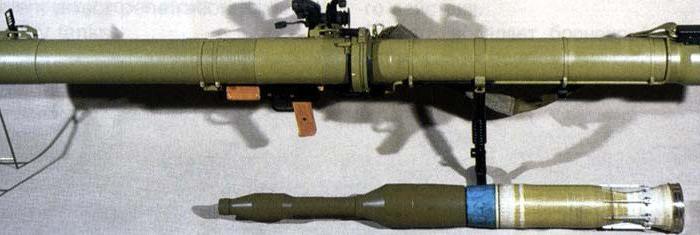
One cannot ignore such modern weapons of the Russian army as the GP-25 and GP-30 grenade launchers. They are equipped with Kalashnikov assault rifles of modifications AK-12, AKM, AKMS, AKS-74U, AK-74, AK-74M, AK-103 and AK-101. Underbarrel grenade launchers GP-25 and GP-30 are designed to destroy living and non-living targets and unarmored vehicles. Sighting range - about 400 m, caliber - 40 mm.
Sniper rifles
Sniper rifles used as small arms of the Russian army are divided into several types, or rather, they have different purposes. To eliminate single camouflaged or moving targets, a 7.62 mm SVD is used. The rifle was developed back in 1958 by E. Dragunov and has an effective range of up to 1300 meters. Since then, the weapon has gone through several modifications. In the 90s. was developed and put into service with the Russian army (SVU-AS). It has a caliber of 7.62 and is designed for airborne units. This rifle has automatic firing capability and is equipped with a folding buttstock. 
For military operations that require the absence of noise, VSS is used. Despite the fact that the Vintorez sniper rifle was created in the former USSR, SP-5 and SP-6 cartridges are used for firing (it penetrates an 8 mm thick steel plate from a distance of 100 m). Sighting range is from 300 to 400 meters, depending on the type of sight used.
Russian Naval Forces
The armament of the Navy, which is used by the army of the new Russia, is quite diverse. Surface ships provide support for submarine forces, provide transportation of landing troops and cover landings, protection of territorial waters, coastline, search and tracking of the enemy, support for sabotage operations. Submarine forces provide reconnaissance operations, surprise attacks on continental and maritime targets. Naval aviation forces are used to attack enemy surface forces, destroy key facilities on its coastline, intercept and prevent attacks by enemy aircraft. 
The Navy includes destroyers, patrol ships of the far and near sea zone, small missile and anti-submarine ships, missile, anti-sabotage boats, large and small landing ships, nuclear submarines, minesweepers, landing boats.
Defense production
After the collapse of the USSR, the defense industry experienced a sharp decline. However, in 2006, Russian President Vladimir Putin approved the State Armaments Development Program for 2007-2015. According to this document, new weapons and various technical means should be developed over the indicated years to replace the old one.
The development and supply of new and modernized weapons and equipment is carried out by such enterprises as Russian Technologies, Oboronprom, Motor Builder, Izhevsk Machine Building Plant, United Aircraft Corporation, Russian Helicopters OJSC, Uralvagonzavod, Kurgansky engine building plant" and others.
Most of the research centers and design bureaus that develop weapons for the Russian army are strictly classified, as are defense industry enterprises. But the defense industry today provides jobs for many large and medium-sized cities of the Russian Federation.
The international military-technical forum "Army-2016", which was held in the Patriot Park near Moscow from September 6 to 11, exceeded all expectations. More than half a million people visited the forum in five days. This excitement was caused primarily by a large number of new products that were presented by enterprises of the domestic military-industrial complex. About the most interesting ones - in the material of the editors of the Zvezda TV channel. New armored vehicles Of course, the attention of specialists, foreign delegations, and other forum visitors was riveted primarily to armored vehicles. Not only because the exposition of military vehicles occupied almost half of the exhibition complex, but also because among the exhibits there were new items that I wanted to see live. For example, at the exhibition you could sit behind the wheel of one of these new products - the Tiger armored vehicle with an automated combat module equipped with a 30-mm cannon. As a representative of the developer of the Military Industrial Company told the Zvezda TV channel, the vehicle can not only move and shoot at the operator’s commands, but also independently find and track targets. Ammunition from such a gun can destroy a modern enemy armored personnel carrier from a distance of 1.5 km.  It is worth noting that the Tiger machine has become a unified platform for many combat modules. In addition to the standard landing vehicle with a machine gun mounted on the roof, at a private show for specialists, a combat vehicle of the squad and a reconnaissance and control vehicle of the commander "Gibka-S", also created on the basis of the "Tigr", were presented. "Igla-S" machine can defend combined arms units from aircraft and helicopters flying at low and ultra-low altitudes.
It is worth noting that the Tiger machine has become a unified platform for many combat modules. In addition to the standard landing vehicle with a machine gun mounted on the roof, at a private show for specialists, a combat vehicle of the squad and a reconnaissance and control vehicle of the commander "Gibka-S", also created on the basis of the "Tigr", were presented. "Igla-S" machine can defend combined arms units from aircraft and helicopters flying at low and ultra-low altitudes. 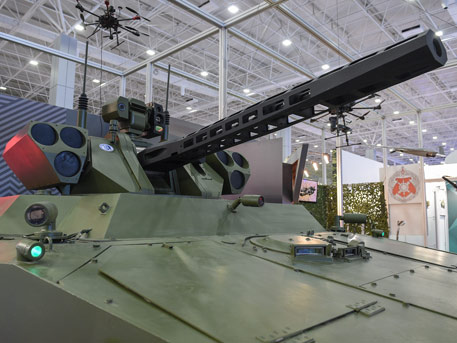 Artillery troops also got a novelty. Uralvagonzavod presented at the exhibition the first Russian artillery installation of the 120-mm Phlox caliber, placed on the highly passable Ural chassis. In the future, this machine should completely replace obsolete towed guns, because it combines the capabilities of a long-range gun, howitzer and mortar and can fire both from 100 meters and 10 km. Ammunition for self-propelled guns, by the way, is also impressive - 80 rounds. Concern "Tractor Plants" presented at the exhibition a self-propelled tracked anti-tank gun 2S25 "Octopus-SDM-1". Yes, the previous version of the self-propelled gun was presented at the first forum, but the interest in it from foreign delegations not only did not die out, but grew significantly. She, like the BMP-3M "Dragoon", according to a representative of the concern, is interested in the armed forces of Venezuela, Indonesia, India, as well as some countries in the Middle East. These countries choose Russian equipment, first of all, in terms of price and quality. Russian self-propelled guns are capable of fighting in the most difficult conditions, and at a cost several times cheaper than their Western counterparts.
Artillery troops also got a novelty. Uralvagonzavod presented at the exhibition the first Russian artillery installation of the 120-mm Phlox caliber, placed on the highly passable Ural chassis. In the future, this machine should completely replace obsolete towed guns, because it combines the capabilities of a long-range gun, howitzer and mortar and can fire both from 100 meters and 10 km. Ammunition for self-propelled guns, by the way, is also impressive - 80 rounds. Concern "Tractor Plants" presented at the exhibition a self-propelled tracked anti-tank gun 2S25 "Octopus-SDM-1". Yes, the previous version of the self-propelled gun was presented at the first forum, but the interest in it from foreign delegations not only did not die out, but grew significantly. She, like the BMP-3M "Dragoon", according to a representative of the concern, is interested in the armed forces of Venezuela, Indonesia, India, as well as some countries in the Middle East. These countries choose Russian equipment, first of all, in terms of price and quality. Russian self-propelled guns are capable of fighting in the most difficult conditions, and at a cost several times cheaper than their Western counterparts. 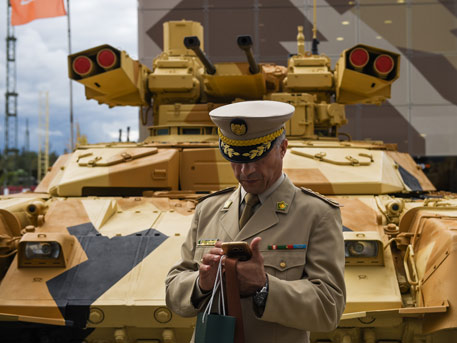 However, at the current forum, the concern still surprised representatives of foreign countries with a novelty. A furor among them was made by the new amphibious armored personnel carrier BT-3F. It is designed to carry 12 paratroopers with equipment, cargo and ammunition. The vehicle can also be used as a control and reconnaissance point. Representatives of the Russian Ground Forces appreciated the transport-loading vehicle for self-propelled artillery mounts. It would seem that such self-propelled guns as Msta-S and Coalition should be of interest, but experts understand the real significance of such a transport-loading vehicle. The presence of 2F66-1 in the troops significantly increases the intensity of firing, simplifies the work of laying ammunition in self-propelled guns. The calculation of the machine is two people who can load a full ammunition load, 46 ammunition, in 20 minutes.
However, at the current forum, the concern still surprised representatives of foreign countries with a novelty. A furor among them was made by the new amphibious armored personnel carrier BT-3F. It is designed to carry 12 paratroopers with equipment, cargo and ammunition. The vehicle can also be used as a control and reconnaissance point. Representatives of the Russian Ground Forces appreciated the transport-loading vehicle for self-propelled artillery mounts. It would seem that such self-propelled guns as Msta-S and Coalition should be of interest, but experts understand the real significance of such a transport-loading vehicle. The presence of 2F66-1 in the troops significantly increases the intensity of firing, simplifies the work of laying ammunition in self-propelled guns. The calculation of the machine is two people who can load a full ammunition load, 46 ammunition, in 20 minutes. 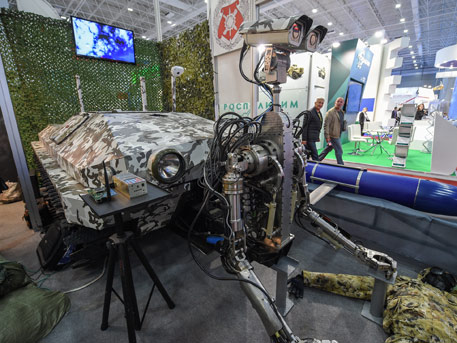 It should be noted that special attention was paid to the logistics troops at the exhibition. Such a variety of logistics vehicles could hardly be seen anywhere else: refrigerators, canteen cars, workshops, laboratories, factories, tanks, mobile power plants, situation monitoring systems and others - they were all presented on a static display. Robots are no longer the future, but the present of the army
It should be noted that special attention was paid to the logistics troops at the exhibition. Such a variety of logistics vehicles could hardly be seen anywhere else: refrigerators, canteen cars, workshops, laboratories, factories, tanks, mobile power plants, situation monitoring systems and others - they were all presented on a static display. Robots are no longer the future, but the present of the army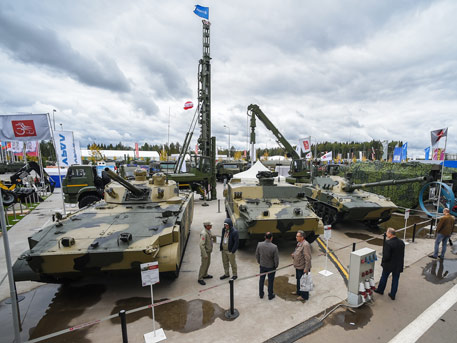 Robotic platforms at the current forum "Army-2016" fit to allocate a separate pavilion. There are more and more robots with combat modules. For example, the Kalashnikov Concern for the first time presented the Soratnik combat automated system at the exhibition, capable of conducting reconnaissance and supporting troops with fire in conjunction with drones. It has technical vision, protected radio communications and can also participate in demining and clearing. Fellow "Companion" shock robot "Uranus-9" was also presented at the forum. Protected from bullets, it is a formidable weapon and is armed with a 30 mm automatic cannon, a 7.62 mm machine gun paired with it, and Ataka anti-tank guided missiles.
Robotic platforms at the current forum "Army-2016" fit to allocate a separate pavilion. There are more and more robots with combat modules. For example, the Kalashnikov Concern for the first time presented the Soratnik combat automated system at the exhibition, capable of conducting reconnaissance and supporting troops with fire in conjunction with drones. It has technical vision, protected radio communications and can also participate in demining and clearing. Fellow "Companion" shock robot "Uranus-9" was also presented at the forum. Protected from bullets, it is a formidable weapon and is armed with a 30 mm automatic cannon, a 7.62 mm machine gun paired with it, and Ataka anti-tank guided missiles. 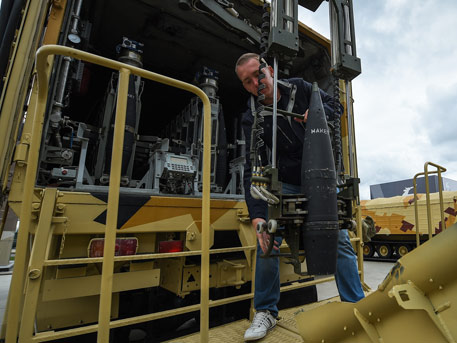 Another robotic fire support system is the Whirlwind. In this case, the combat module, consisting of a 30-mm cannon, a 7.62-mm machine gun and Kornet-M anti-tank missiles, is mounted on a BMP-3. The platform is controlled by a person, but the robot can get to the desired point on its own. It is noteworthy that the Whirlwind can also be used at night, since it is equipped with a thermal imager. Two more interesting exhibits were presented to the public. Zoomorphic robot "Predator". The dog-like robot can carry up to 200 kg of cargo, carry a Kord machine gun and climb mountains where tracked vehicles cannot go. At the same time, the technical vision of the robot allows you to independently aim weapons at the target according to the “friend or foe” parameters. Another robot presented at the forum, on the contrary, is intended exclusively for humanitarian operations. The robotic tracked platform "Specialist" allows you to evacuate a wounded soldier on the battlefield or helps to take away unexploded ordnance. Small arms and protective equipment
Another robotic fire support system is the Whirlwind. In this case, the combat module, consisting of a 30-mm cannon, a 7.62-mm machine gun and Kornet-M anti-tank missiles, is mounted on a BMP-3. The platform is controlled by a person, but the robot can get to the desired point on its own. It is noteworthy that the Whirlwind can also be used at night, since it is equipped with a thermal imager. Two more interesting exhibits were presented to the public. Zoomorphic robot "Predator". The dog-like robot can carry up to 200 kg of cargo, carry a Kord machine gun and climb mountains where tracked vehicles cannot go. At the same time, the technical vision of the robot allows you to independently aim weapons at the target according to the “friend or foe” parameters. Another robot presented at the forum, on the contrary, is intended exclusively for humanitarian operations. The robotic tracked platform "Specialist" allows you to evacuate a wounded soldier on the battlefield or helps to take away unexploded ordnance. Small arms and protective equipment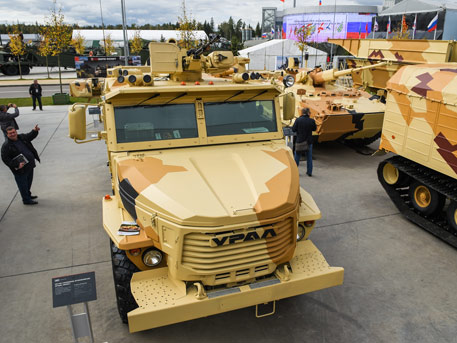 Russian Defense Minister Sergei Shoigu, who attended the forum, was shown about fifty modern and advanced models of military and civilian small arms produced by the Kalashnikov concern in the demo center. The company surprised with many novelties. Including the RPK-16 light machine gun of 5.45 mm caliber. However, Shoigu's attention was drawn to the compact SVK self-loading sniper rifle, which became one of the most popular novelties of the forum. The promising SVK rifle, which is being developed in two versions, chambered for the domestic cartridge 7.62x54R and for the most common rifle cartridge in the world 7.62x51 NATO, is currently undergoing factory tests. from military officials, but also from active employees of law enforcement agencies, special forces, police, who came to the exhibition to evaluate the novelties of the domestic defense industry. The security forces were primarily interested in protective equipment, small arms and robotic support equipment. As a rule, before delivering any development to the troops, it is tested precisely in such power structures as the FSB, special forces, and anti-terror groups. For example, from the means of protection, the Constructor armored complex developed by the Research Institute of Steel for assault operations aroused great interest . Its difference from the suits of the previous generation is that it protects not only the torso of a person, but also the limbs and joints, turning a person almost into a tank.
Russian Defense Minister Sergei Shoigu, who attended the forum, was shown about fifty modern and advanced models of military and civilian small arms produced by the Kalashnikov concern in the demo center. The company surprised with many novelties. Including the RPK-16 light machine gun of 5.45 mm caliber. However, Shoigu's attention was drawn to the compact SVK self-loading sniper rifle, which became one of the most popular novelties of the forum. The promising SVK rifle, which is being developed in two versions, chambered for the domestic cartridge 7.62x54R and for the most common rifle cartridge in the world 7.62x51 NATO, is currently undergoing factory tests. from military officials, but also from active employees of law enforcement agencies, special forces, police, who came to the exhibition to evaluate the novelties of the domestic defense industry. The security forces were primarily interested in protective equipment, small arms and robotic support equipment. As a rule, before delivering any development to the troops, it is tested precisely in such power structures as the FSB, special forces, and anti-terror groups. For example, from the means of protection, the Constructor armored complex developed by the Research Institute of Steel for assault operations aroused great interest . Its difference from the suits of the previous generation is that it protects not only the torso of a person, but also the limbs and joints, turning a person almost into a tank.  Intelligence officers were interested in the modified KP-M Armor explosion-proof suit, which had already been tested in Syria. It was used by Russian sappers when clearing mines in Palmyra. An interesting novelty for the servicemen of the Russian Guard was the development of the NIIPH, which combined a means of protection and active defense. At the exhibition, the company presented the Legion firing shield, which is capable of shooting non-lethal ammunition: traumatic, annoying light and sound. Scientific and business program The Army-2016 forum has become not only an exhibition, but also an opportunity for specialists to meet at one site and discuss the prospects for further development of weapons. So, within the framework of the scientific and business program, representatives of the defense industry, experts and leading military specialists discussed the prospects for the use of high-strength armor of new brands for the latest combat vehicles of the Ground and Airborne Forces. According to experts, especially for promising combat vehicles on tracked and wheeled platforms in scientific Research Institute (NII) is completing the development of PAS-2B and AMG-6 alloys, the use of which will make it possible to transfer the armor class from bulletproof to projectileproof while maintaining the same mass. In addition, based on high-strength aluminum and magnesium alloys, a number of studies are being carried out to create the easiest world of anti-ballistic armor of the future. New grades of alloys based on advanced technologies will differ from their predecessors in a reduced weight (by at least 15 percent) while maintaining the same strength. For promising infantry fighting vehicles (IFVs) of the Ground Forces, the research institute will now begin production of the newest high-strength thin-sheet weldable steel. The strongest steel armor of the 44S-Sv-Sh brand easily withstands shelling with armor-piercing bullets of 12.7 mm caliber. The new steel sheet armor will be the lightest armor of this class in Russia. Other experts discussed the results of work to increase dynamic characteristics armored vehicles and the possibility of equipping them with advanced sets of additional protection. Particular attention was paid to the emergency reconfiguration of damaged modules due to the increase in the range of modern small-sized anti-tank weapons (RPGs, ATGMs) and high-precision weapons used. Experts noted that a further increase in crew survivability is associated with the installation of universal active protection systems (KAZ) on armored vehicles. The forum considered the possibility of deploying the Arena-E KAZ on the T-90MS tank. Earlier, Uralvagonzavod presented the T-72B3 tank with this active protection complex to the general public. According to experts, the Arena-E KAZ is installed in bulletproof compartments outside the tank turret and operates in automatic mode, providing double protection. The system provides radar tracking and engagement of flying targets at a speed of up to 700 meters per second. Summing up the results of the forum, it can be noted that it has become the world's leading exhibition of weapons and military equipment and an authoritative platform for discussing advanced ideas and developments in the interests of the armed forces. This is evidenced by the fact that the forum was attended by representatives of more than 80 countries, 35 of which were official delegations. The forum was also of great importance for the state defense order. During his work, the Russian Ministry of Defense signed 17 contracts for 130 billion rubles.
Intelligence officers were interested in the modified KP-M Armor explosion-proof suit, which had already been tested in Syria. It was used by Russian sappers when clearing mines in Palmyra. An interesting novelty for the servicemen of the Russian Guard was the development of the NIIPH, which combined a means of protection and active defense. At the exhibition, the company presented the Legion firing shield, which is capable of shooting non-lethal ammunition: traumatic, annoying light and sound. Scientific and business program The Army-2016 forum has become not only an exhibition, but also an opportunity for specialists to meet at one site and discuss the prospects for further development of weapons. So, within the framework of the scientific and business program, representatives of the defense industry, experts and leading military specialists discussed the prospects for the use of high-strength armor of new brands for the latest combat vehicles of the Ground and Airborne Forces. According to experts, especially for promising combat vehicles on tracked and wheeled platforms in scientific Research Institute (NII) is completing the development of PAS-2B and AMG-6 alloys, the use of which will make it possible to transfer the armor class from bulletproof to projectileproof while maintaining the same mass. In addition, based on high-strength aluminum and magnesium alloys, a number of studies are being carried out to create the easiest world of anti-ballistic armor of the future. New grades of alloys based on advanced technologies will differ from their predecessors in a reduced weight (by at least 15 percent) while maintaining the same strength. For promising infantry fighting vehicles (IFVs) of the Ground Forces, the research institute will now begin production of the newest high-strength thin-sheet weldable steel. The strongest steel armor of the 44S-Sv-Sh brand easily withstands shelling with armor-piercing bullets of 12.7 mm caliber. The new steel sheet armor will be the lightest armor of this class in Russia. Other experts discussed the results of work to increase dynamic characteristics armored vehicles and the possibility of equipping them with advanced sets of additional protection. Particular attention was paid to the emergency reconfiguration of damaged modules due to the increase in the range of modern small-sized anti-tank weapons (RPGs, ATGMs) and high-precision weapons used. Experts noted that a further increase in crew survivability is associated with the installation of universal active protection systems (KAZ) on armored vehicles. The forum considered the possibility of deploying the Arena-E KAZ on the T-90MS tank. Earlier, Uralvagonzavod presented the T-72B3 tank with this active protection complex to the general public. According to experts, the Arena-E KAZ is installed in bulletproof compartments outside the tank turret and operates in automatic mode, providing double protection. The system provides radar tracking and engagement of flying targets at a speed of up to 700 meters per second. Summing up the results of the forum, it can be noted that it has become the world's leading exhibition of weapons and military equipment and an authoritative platform for discussing advanced ideas and developments in the interests of the armed forces. This is evidenced by the fact that the forum was attended by representatives of more than 80 countries, 35 of which were official delegations. The forum was also of great importance for the state defense order. During his work, the Russian Ministry of Defense signed 17 contracts for 130 billion rubles.
The rearmament of the fleet and the army is not only about the supply of modern equipment to the troops. New types of weapons are constantly being created in the Russian Federation. Their future development is also being decided. Consider further the latest military developments in Russia in some areas.
Strategic intercontinental missile
This type is an important weapon. The backbone of the Russian Federation are liquid heavy ICBMs "Sotka" and "Voevoda". Their service life has been extended three times. Currently, a heavy Sarmat complex has been developed to replace them. It is a hundred-ton class missile that carries at least ten multiple warheads in the head element. The main characteristics of "Sarmat" have already been assigned. Serial production is scheduled to begin at the legendary Krasmash, for the reconstruction of which 7.5 billion rubles have been allocated from the Federation budget. Promising combat equipment is already being created, including individual breeding units with promising means of overcoming missile defense (ROC "Inevitability" - "Breakthrough").
Installation "Vanguard"
In 2013, the commanders of the Strategic Missile Forces conducted an experimental launch of this medium-class ballistic intercontinental missile. It was the fourth launch since 2011. Three previous launches were also successful. In this test, the rocket flew with a mock combat unit. It replaced the previously used ballast. "Vanguard" is a fundamentally newest rocket, which is not considered a continuation of the Topol family. The command of the Strategic Missile Forces calculated an important fact. It lies in the fact that Topol-M can be hit by 1 or 2 anti-missiles (for example, the American type SM-3), and at least 50 will be required for one Avangard. That is, the effectiveness of a missile defense breakthrough has increased significantly.
In the installation of the "Avangard" type, the already familiar missile with a multiple head element of personal guidance has been replaced by the latest system, which has a guided warhead (UBB). This is an important innovation. The blocks in the MIRV are located in 1 or 2 tiers (in the same way as in the Voevoda installation) around the breeding stage engine. By command of the computer, the stage begins to turn towards one of the targets. Then, with a small impulse of the engine, the warhead released from the mounts is sent to the target. Its flight is carried out along a ballistic curve (like a thrown stone), without maneuvering in height and course. In turn, the controlled unit, unlike the specified element, looks like an independent rocket with a personal guidance and control system, an engine and rudders resembling conical "skirts" at the bottom. This is an efficient device. The engine can allow him to maneuver in space, and in the atmosphere - "skirt". Due to this control, the warhead flies 16,000 km from a 250-kilometer altitude. In general, the range of the Avangard can be more than 25,000 km.
Bottom missile systems
The latest military developments of Russia are also present in this area. Here, too, there are innovations. Back in the summer of 2013, tests were carried out in the White Sea of such weapons as the new Skif ballistic missile, which is capable of firing in the standby mode on the ocean or seabed at the right time and hitting a ground and sea target. It uses the thickness of the ocean as the original mine installation. The location of these systems at the bottom of the water element will provide the necessary invulnerability to the weapons of retaliation. 
The latest military developments in Russia - mobile missile systems
Much work has been invested in this direction. The Russian Defense Ministry in 2013 began testing a new hypersonic missile. Its flight speed is approximately 6 thousand km / h. It is known that today hypersonic technology is being researched in Russia in several developing areas. Along with this, the Russian Federation also produces combat railroad and naval missile systems. This significantly upgrades weapons. In this direction, experimental design of the latest military developments in Russia is actively carried out.
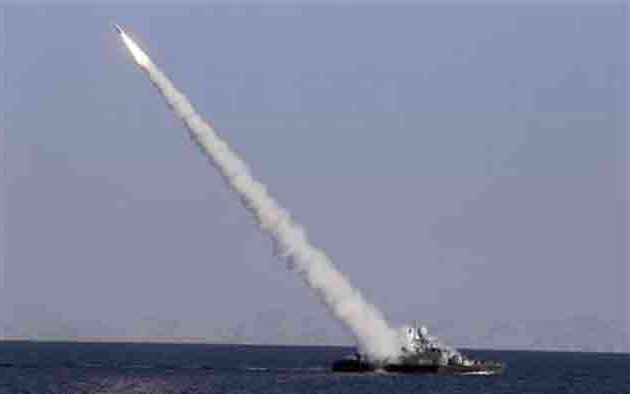
Also, the so-called throw test launches of Kh-35UE missiles were successfully completed. They were fired from installations placed in a cargo-type container of the Club-K complex. The Kh-35 anti-ship missile is distinguished by its flight to the target and stealth at a height not exceeding 15 meters, and at the final section of its trajectory - 4 meters. The presence of a powerful warhead and a combined homing system allows one unit of this weaponry to completely destroy a militarized ship with a displacement of 5 thousand tons. For the first time, a model of this missile system was shown in Malaysia in 2009, in a military technical salon.
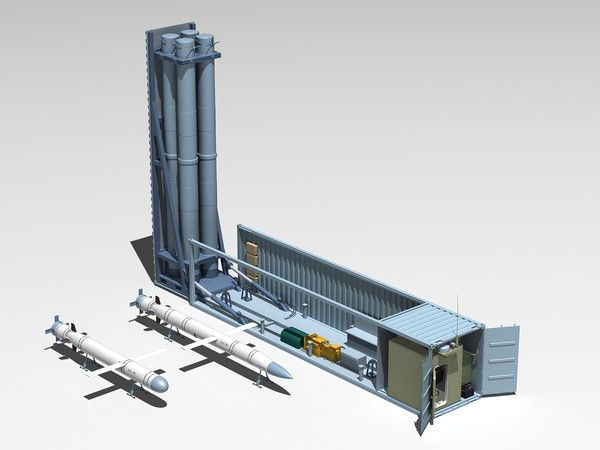
He immediately made a splash, as the Club-K is a typical twenty and forty-foot cargo containers. This Russian military equipment is transported by rail, sea vessels or trailers. Command posts and launchers with Kh-35UE 3M-54E and 3M-14E multipurpose missiles are placed in said container. They can hit both land and surface targets. Every container ship that carries the Club-K is, in principle, a missile carrier with a devastating salvo.
This is an important weapon. Absolutely any echelon with these installations or a convoy, which includes heavy-duty container carriers, is a powerful missile unit that can appear in any unexpected place. Successfully conducted tests proved that Club-K is not a fiction, it is a real combat system. These new developments of military equipment are a confirmed fact. Similar tests are also being prepared with 3M-14E and 3M-54E missiles. By the way, the 3M-54E missile can completely destroy an aircraft carrier.
Strategic bomber of the latest generation

At present, the Tupolev company is developing and improving a promising aviation complex (PAK DA). It is the latest generation Russian strategic bomber-carrier. This aircraft is not an improvement of the TU-160, but will be an innovative aircraft based on the latest solutions. In 2009, a contract was signed between the Ministry of Defense of the Russian Federation and the Tupolev company to conduct R&D on the basis of the PAK DA for a period of three years. In 2012, an announcement was made that the PAK DA preliminary project had already been completed and signed, and then the latest military developments would begin.
In 2013, this was approved by the command of the Russian Air Force. PAK DA is famous for itself as modern nuclear missile carriers TU-160 and TU-95MS.
Of several options, they settled on a subsonic stealth aircraft with a “flying wing” scheme. This military equipment of Russia is not able to overcome it due to its design features and huge wingspan, but it may be invisible to radars.
Future missile defense
Work continues on the creation of the S-500 missile defense system. In this newest generation, it is planned to use separate tasks for the neutralization of aerodynamic and ballistic missiles. The S-500 differs from the S-400, designed for air defense, in that it is being created as an anti-missile defense system.
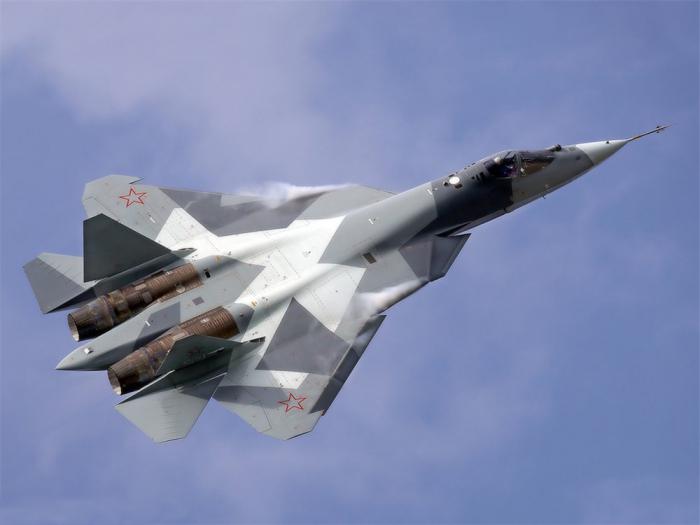
It will also be able to fight hypersonic weapons that are actively developing in the United States. These new military Russian developments are important. The S-500 is an aerospace defense system that they want to build in 2015. It will have to neutralize objects that fly at an altitude above 185 km and at a distance of more than 3,500 km from the launch facility. On the this moment the draft sketch has already been completed and promising military developments in Russia are being carried out in this direction. The main purpose of this complex will be to defeat the latest types of air-type attack weapons, which are produced today in the world. It is assumed that this system will be able to perform tasks both in the stationary version and when moving into the combat zone. The destroyers (destroyer destroyers), which Russia is due to start producing in 2016, will be equipped with a shipborne version of the S-500 anti-missile system.
Combat lasers

There are many interesting things in this direction. Russia began military developments in this area before the United States of America and has in its arsenal the most experienced samples of high-precision chemical combat lasers. Russian developers tested the first such installation back in 1972. Then, with the help of a domestic mobile “laser gun”, it was possible to successfully hit a target in the air. So in 2013, the Russian Ministry of Defense requested to continue work on the creation of combat lasers that are capable of hitting satellites, aircraft and ballistic missiles.
This is important in modern weapons. New military developments in Russia in the field of lasers are being carried out by the Almaz-Antey air defense organization, the Taganrog Aviation Scientific and Technical Concern. Beriev and the company "Khimpromavtomatika". All this is controlled by the Ministry of Defense of the Russian Federation. TANTK them. Beriev began to modernize again the A-60 flying laboratories (based on the Il-76), which are used to test the latest laser technologies. They will be based at an airfield near Taganrog. 
prospects
In the future, with successful development in this area, the Russian Federation will build one of the most powerful lasers in the world. This device in Sarov will occupy an area equal to two football fields, and at its highest point it will reach the size of a 10-storey building. The facility will be equipped with 192 laser channels and enormous laser pulse energy. For the French and American analogues, it is equal to 2 megajoules, and for Russia it is approximately 1.5-2 times higher. The superlaser will be able to create colossal temperatures and densities in matter, which are the same as in the Sun. This device will also simulate in laboratory conditions the processes observed during the testing of thermonuclear weapons. The creation of this project will be estimated at about 1.16 billion euros.
armored vehicles
In this regard, the latest military developments were also not long in coming. In 2014, the Russian Ministry of Defense will start purchasing main effective battle tanks based on the Armata unified platform for heavy armored vehicles. Based on a successful batch of these vehicles, controlled military operation will be carried out. The release of the first prototype of the tank based on the Armata platform, in accordance with the current schedule, took place in 2013. The specified military equipment of Russia is planned to be supplied to military units from 2015. The development of the tank will be carried out by Uralvagonzavod.
Another prospect of the Russian defense industry is the "Terminator" ("Object - 199"). This combat vehicle will be designed to neutralize air targets, manpower, armored vehicles, as well as various shelters and fortifications. 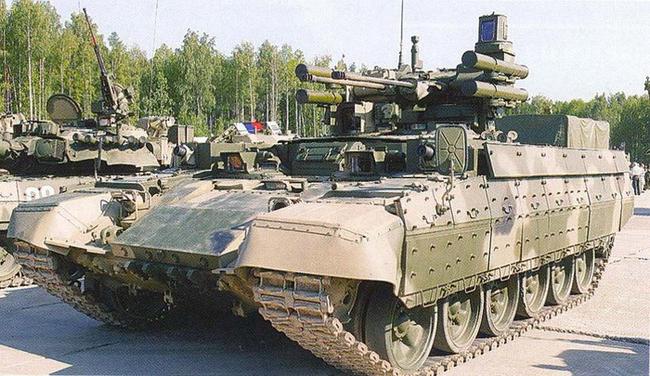 "Terminator" is capable of being created on the basis of the T-90 and T-72 tanks. Its standard equipment will consist of 2 30-mm cannons, an Ataka ATGM with laser guidance, a Kalashnikov machine gun and 2 AGS-17 grenade launchers. These new developments of Russian military equipment are significant. The capabilities of the BMPT allow the implementation of significant density fire on 4 targets at once.
"Terminator" is capable of being created on the basis of the T-90 and T-72 tanks. Its standard equipment will consist of 2 30-mm cannons, an Ataka ATGM with laser guidance, a Kalashnikov machine gun and 2 AGS-17 grenade launchers. These new developments of Russian military equipment are significant. The capabilities of the BMPT allow the implementation of significant density fire on 4 targets at once.
precision weapons
The Air Force of the Russian Federation will adopt missiles for strikes against surface and ground targets guided by GLONASS. At the test site in Akhtubinsk, the Chkalov GLITs passed tests of S-25 and S-24 missiles, which are equipped with special sets with seeker and overlays on control rudders. This is an important improvement. GLONASS guidance kits began to arrive en masse at air bases in 2014, that is, Russian helicopter and front-line aviation completely switched to high-precision weapons.
Unguided missiles (NUR) S-25 and S-24 will remain the main weapon of the bomber and attack aircraft of the Russian Federation. However, they hit the squares, and this is an expensive and inefficient pleasure. The GLONASS homing heads will convert the S-25 and S-24 into high-precision weapons capable of hitting small targets with an accuracy of 1 meter.
Robotics
The main priorities in the organization of promising varieties of military equipment and weapons are almost defined. Emphasis is placed on the creation of the most robotic combat systems, where a person will be assigned a safe operator function.
In this direction, a set of programs is planned:
- The organization of power armor known as exoskeletons.
- Work on the development of underwater robots for various purposes.
- Designing a series of unmanned aerial vehicles.
- It is planned to establish technologies for the transmission of wireless electricity. They will allow to realize the ideas of Nikola Tesla on an industrial scale.
Russian experts relatively recently (2011-2012) created the SAR-400 robot. He is 163 cm tall and looks like a torso with two “manipulator arms” equipped with special sensors. They allow the operator to feel the object being touched.
SAR-400 is capable of performing several functions. For example, to fly into space or perform a remote surgical operation. And in military conditions, it is generally irreplaceable. He can be a scout, and a sapper, and a repairman. In terms of its working capabilities and performance characteristics, the android SAR-400 is superior (for example, in squeezing the brush) foreign analogues and American ones too.
Weapon
The latest military developments in Russia are also actively being carried out in this direction. This is a confirmed fact. The gunsmiths of Izhevsk began the development of the newest generation of small arms automatic weapons. It differs from the popular Kalashnikov in everything. A new platform is implied, allowing it to compete with analogues of the latest models of small arms in the world. This is important in this area. As a result, law enforcement agencies can be provided with fundamentally the latest combat systems that correspond to the rearmament program of the Russian army until 2020. Therefore, significant developments are currently underway in this regard. Future rifle will be of a modular type. This will simplify subsequent modernization and production. In this case, a scheme will be used more often in which the weapon store and the firing mechanism will be located in the butt behind the trigger. Ammunition with innovative ballistic solutions will also be used to develop the latest small arms systems. For example, increased accuracy, significant effective range, more powerful penetration ability. The gunsmiths were tasked with creating a new system from scratch, not based on obsolete principles. To achieve this goal, the latest technologies are involved. At the same time, Izhmash will not renounce work on the modernization of the AK 200 series, since they are already interested in the supply of this type of weapon. Currently, further military developments are being carried out in this direction. 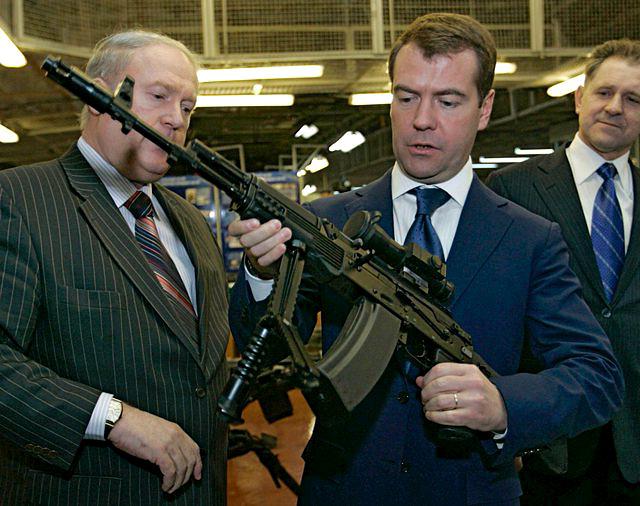
Outcome
All of the above emphasizes the successful modernization of the weapons of the Russian Federation. The main thing is to keep up with the times and not stop there, implementing the latest improvements in this area. Along with the above, there are also secret military developments of Russia, but their publication is limited.
The modern Russian Armed Forces are strikingly different from the army that was in the 90s and early 2000s. Today, the Russian Armed Forces receive the most modern weapons. By 2020, the latest models of military equipment and weapons in the Russian army should be at least 70%. According to experts, more than 19 trillion rubles can be spent on the modernization of the army. Such a huge amount is provided for by the new state program on military-technical priorities and armament of the Russian army.
Prospects for the next decade
The rearmament of the army is not only the supply of already created modern equipment to the troops. In Russia, the development of fundamentally new weapons is constantly being created, and decisions are being made for their maximum development. According to experts, in the next decade, the Russian Air Force will receive the latest types of weapons:
- over 500 aircraft of various types;
- over 1000 helicopters of various types;
- over 200 newest air defense systems that will merge into a single aerospace defense system;
- the latest fifth-generation fighters;
- new long-range aircraft;
- modernized and new ballistic missiles for nuclear deterrence forces;
- the latest types of high-precision weapons are a variety of bombs and missiles with latest systems guidance;
- new types of anti-tank weapons and new generation air defense systems;
- new weapon.
Additional development will be received by automated command and control systems. Perhaps in the near future Russia will have a super weapon that works on new physical principles. Currently underway scientific developments to create this super weapon. At the moment it has the status of "secret". Also, developments on the creation of hypersonic air-launched missiles do not stop. They should appear before 2020. Hypersonic missiles will exceed the speed of sound by about 6-8 times. The first types of hypersonic vehicles should appear no earlier than 2030.
New nuclear strategic missiles
The core of Russia's shield is strategic nuclear weapons. Its main representatives are heavy liquid ICBMs "Sotka" and "Voevoda". They have already tripled their service life. Today, they are being replaced by the Topol and Topol-M missiles, as well as promising nuclear weapon new generation.
- this is a new nuclear weapon, which is produced in the city of Votkinsk at the Votkinsk Machine-Building Plant. The RS-24 missiles will gradually replace the RS-20 and RS-18 ICBMs after their warranty periods have expired. Complexes "Yars" began to deploy in December 2009 after they passed the test. In November 2010, General S. Karakaev, Commander-in-Chief of the Strategic Missile Forces, announced that mobile complexes with Topol-M single-block missiles would gradually be re-equipped with Yars mobile complexes. In 2015, the units of the Strategic Missile Forces are being actively equipped with RS-24 Yars missiles.

RS-26 Frontier - a strategic missile system using an intercontinental ballistic missile increased shooting accuracy. Nuclear weapons are being developed by the Moscow Institute of Thermal Engineering. The complex has been developed since 2006. In the period up to 2009, studies were carried out by national research universities on the topic "Frontier".
The first test run RS-26 Line in 2011 ended in an accident. The second and third launches took place in 2012 from the Plesetsk and Kapustin Yar test sites. During the launches, the anti-missile capabilities of the new missile were evaluated. The fourth launch took place in 2013. Starting from 2014, the missile of the Rubezh complex will be mass-produced at the Votkinsk Machine-Building Plant. Since 2014, the complex has been adopted by the Strategic Missile Forces. The new missile will eventually replace the Topol-M and Yars ICBMs.

ICBM "Sarmat" RS-28
The promising heavy ICBM "Sarmat" RS-28 is a new generation missile. It began to be designed in 2009. According to the original plan, it was supposed to be operational by the end of 2016. The purpose of creating a heavy missile was to replace the RS-20 "Satan" ICBM in the Strategic Missile Forces. The development of ICBMs is carried out in the city of Miass GRC im. Makeev with the participation of NPO Mashinostroeniya. The terms of reference for the design of new generation ICBMs were approved in 2011. In September 2012, a big council on the new rocket was held, where all the developers met, up to level 2-3. In early October, the Ministry of Defense generally approved the draft of the new ICBM, however, a number of comments and suggestions were indicated that developers had to take into account in further design.
In May 2014, Yuri Borisov, Deputy Minister of Defense, stated that work on the Sarmat ICBM was proceeding according to plan, and that the missile was capable of flying across the South and North Poles. The production of ICBMs will be carried out by the cooperation of enterprises, which was formed by the V. Makeev State Research Center - it will be the Krasnoyarsk Machine-Building Plant and other related enterprises. The construction of a full-scale model of the rocket was carried out in 2014. In 2015, a missile test is to be carried out, as well as a number of other tests. In February 2015, the Krasnoyarsk Machine-Building Plant manufactured the first structural elements of the Sarmat heavy missile. It is likely that it is at this plant that mass production of the RS-28 will be launched.
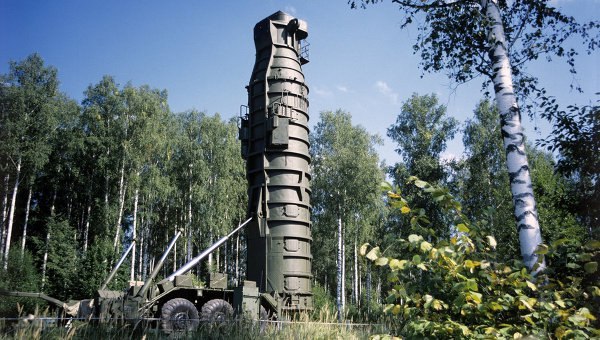
- This is the latest combat railway missile system. The design of the BZHRK began in 2012 at the Moscow Institute of Thermal Engineering. Until December 2014, there was a discussion about what types of missiles to use: based on the RS-26 Rubezh ICBM, the RS-24 Yars ICBM, or using developments on the 3M30 Bulava SLBM. However, in December 2014, information appeared that the complex would be based on ICBMs of the Yars or Yars-M type.
The R&D is expected to be completed by 2020, to create and test samples of the BZHRK, the delivery of super systems to the Strategic Missile Forces should begin after 2020. This is a secret nuclear weapon, so there is little information about it. Currently, in 2015, the preliminary design of the BZHRK and experimental work are being carried out. The new complex was named "Barguzin". The deployment of the new BZHRK is planned no earlier than 2018.
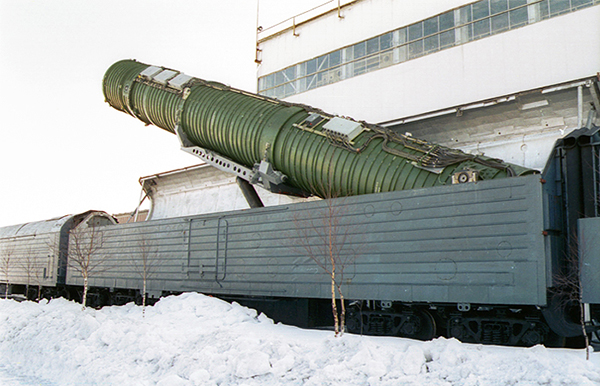
Anti-tank weapons
Complex Kornet-D
The complex is an anti-tank weapon representing a missile system. It was designed in the Instrument Design Bureau of the city of Tula by the chief designer Lev Zakharov. In 2011, the complex was tested. "Kornet-D" is the anti-tank name for the complex supplied to service with the Russian Armed Forces, the export version is called "Kornet-EM". The complex is equipped by default with the 9M133FM-3 missile.
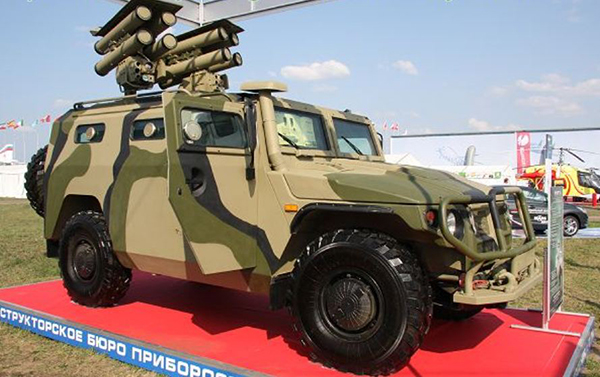
The Hermes complex is an anti-tank product that represents a multi-purpose guided weapon system. Anti-tank weapons were developed in the Instrument Design Bureau of the city of Tula under the leadership of A.G. Shipunov. Tests of the Hermes-A ATGM, an aviation version, as part of the Ka-52 armament were completed in the summer of 2003. After that, the Hermes-A was sent into serial production. The head of the KBP delegation in 2009 said that the helicopter version of the complex would complete flight tests and be put into service. To arm the Mi-28N and Ka-52 helicopters, serial production was launched in 2012. It was also stated that in the near future the Hermes missiles will be used with the Pantsir C1 air defense system.

MGK BUR is a small-sized grenade launcher system with a reusable launcher and a single shot. This anti-tank weapon was developed by the Tula Instrument Design Bureau, created on the basis of the RPO-M flamethrower. MGK "BUR" was first demonstrated at arms exhibitions in 2010. This anti-tank weapon was adopted by the army in 2014. It has been mass-produced since the same year.

RPG-32 Hashim
RPG-32 Hashim is a multifunctional hand-held anti-tank grenade launcher. Anti-tank weapons were designed by the order of Jordan by the Moscow GNPP "Basalt". The contract for the design of the RPG-32 was signed in 2005. In the same year, the creation of a grenade launcher began. Anti-tank weapons were first shown to the public in Paris at an arms exhibition in 2008. Until 2011, anti-tank weapons were tested in Russia. At the end of 2010, an agreement was signed on the creation of a joint venture for the manufacture of RPG-32 between Russia and Jordan - contributions 50 to 50. In 2013, a plant was opened in Jordan for the production of RPG-32. The plant's capacity is 60,000 RPGs per year, and there are plans to supply these weapons to third countries.

small arms
Two-medium ADS machine
The two-medium ADS submachine gun is a unique small-arms weapon capable of firing effectively both under water and on land. This small arms is distinguished by the possibility of firing from the left and right shoulder. Serial production of the unique two-medium ADS assault rifle is scheduled for 2016. The developer of the ADS is the Tula KBP. In 2015, it is planned to produce 20 ADS units, on which the technology for the production of the machine will be tested. Based on the results of experimental military operation, minor changes will be made to the serial version, which are mainly aimed at improving the ease of use of the machine. Foreign customers show great interest in the machine.

SVLK-14S
SVLK-14S is an ultra-precise sniper weapon that can effectively hit targets at a distance of 1.5-2 km. This small arms was created by Vladislav Lobaev. His companies Design Bureau of Integrated Systems, Tsar Cannon and the Lobaev Arms brand are the first in Russia to develop and produce long-range and high-precision weapons, from the stock to the barrel. According to Lobaev, the main tasks of Lobaev Arms are distributed equally - this is work with power structures Russia and the commercial component.
The most powerful small arms in terms of effective firing range from Lobaev Arms is the SVLK-14S sniper rifle. Initially, the SVL rifle was designed to accurately hit the target at a distance of over 2000 meters.

The SVLK-14S rifle provides very high accuracy when shooting. This small arms allows you to confidently hit targets at a distance of up to 2300 meters.
Sniper complex 6S8
The 6S8 sniper complex is the leader among Russian large-caliber rifles. The 6S8 sniper complex was created at the plant. Degtyarev. This rifle was created back in 1997, but for a long time, for various reasons, it was not mass-produced and was not put into service. Nevertheless, after working on the bugs and collecting all the developments over the previous 10 years, the Degtyarevites managed to achieve the adoption of this rifle into service. This happened in June 2013. The ASVK large-caliber sniper rifle was put into service under the designation 6S8 sniper complex.
The 6S8 sniper rifle was designed to solve special tasks to defeat lightly armored and unarmored enemy vehicles, including openly located manpower, including group and other targets at a distance of up to 1500 meters. The rifle can use a specially designed 7N34 cartridge, as well as the entire range of standard 12.7x108 mm cartridges. This large-caliber sniper rifle is structurally made according to the bullpup scheme. This made it possible to reduce the weight and dimensions of the weapon, providing increased compactness and maneuverability. In general, this sniper rifle turned out to be quite reliable and simple, which is incredibly important.

Surface-to-surface cruise missiles
- The BrahMos complex with the SK310 missile is a cruise anti-ship missile or a special cruise missile against ground targets. Work on the complex began in 1999 in related design bureaus (for example, NPO Iskra). The model of the rocket was first shown at the MAKS-2001 air show. Tests began in 2001, and in 2004 they began their mass production. The complex was offered for export. In 2006, the BrahMos missile was adopted by India. Many of its characteristics are identical to those of the Onyx and the Yakhont anti-ship missiles.
- The KTRV hypersonic missile is a project to create the latest hypersonic cruise missile. Work on its creation has been carried out by the Dubna division of the Tactical Missile Corporation (former MKB Raduga) since 2011. When creating a hypersonic missile, the results of tests on research and development "Kholod-2", as well as the experience of creating a hypersonic experimental apparatus "Igla", will be used. In August 2013, it was reported that the TRV Corporation had created a hypersonic missile, however, it only flies for a few seconds.
- BrahMos-II is a project of a new hypersonic missile. The development has been carried out by NPO Mashinostroeniya together with the Indian company DRDO since 2008. The work was planned to be completed in 5 years. The BrahMos-II hypersonic missile was supposed to have a speed of 5-7M. In 2013, exhibition photos of the rocket model appeared.
- Zirkon-S is a missile system with a hypersonic missile. The complex has been developed by NPO Mashinostroeniya since 2011. In 2012, there was a hitch with the design of the rocket, but since 2013, work has continued. In 2015, work continues, the issues of creating materials, technologies, demonstrators, as well as the concept of combat use of the latest hypersonic missile are being resolved.
In the 90s, the Russian army was in a deplorable state. Gradually obsolete equipment of the Soviet era, unattractive conditions of service in the army, constant reduction.
AT last years the rearmament and modernization of the Russian army began. By 2020, it is planned to replace 70% of outdated equipment with modern, developed in our time. We are talking about the amount of about 19 trillion rubles or even more - that is how much it is planned to invest in the army under the new state program.
Prospects for the coming years
Our country is gradually moving from quantity to quality, planning in the next decade to equip the army with the following:
- More than 500 different aircraft, including state-of-the-art 5th generation fighters and long-range aircraft.
- Over 1000 different helicopters.
- Modern ships of new projects.
- More than 200 state-of-the-art air defense systems combined into an aerospace defense system.
- New models of anti-tank and anti-aircraft weapons.
- Tanks of the 4th generation, infantry fighting vehicles, armored personnel carriers and other combat vehicles created on new platforms.
- High-precision new weapons, including rocket weapons and bombs equipped with satellite guidance systems.
- New ballistic missiles designed for nuclear deterrence.
Work is also underway to create hypersonic missiles equipped with a ramjet engine based on aircraft.
The icing on the cake will be the maximum automation and the unification of all types of troops using automated control systems.
Fighter PAK FA
The Russian army should get the state-of-the-art fifth-generation T-50 fighter, about which more than one news has already been released. This will come before America puts the F-35 project into operation. PAK FA (Perspective Aviation Complex of Frontal Aviation) got to the final stage of state tests in the fall of 2015, in the fall of 2016 its 30-mm cannon was tested.
The fighter is a little less than 20 meters in length, its wingspan is 14 meters. Its speed reaches 2600 km / h, and the maximum height is 20 kilometers. Flight time without refueling is almost 6 hours. It is equipped with a 30 mm built-in cannon, and the bomb bays located inside the fuselage carry 10 guided air-to-air missiles and aircraft bombs. On external hangers, the fighter can carry another 14 missiles.
Due to the shape of the fuselage, reflective coating and camouflage technology, the aircraft is almost invisible. At the same time, the T-50 itself can easily detect the enemy thanks to the Himalaya electronic warfare system.
The total cost of the project is from 10 to 30 billion dollars, the start of deliveries to the troops is scheduled for 2018.
Tu-160
In April 2014, Russia resumed production of the Tu-160. Defense Minister Sergei Shoigu said that it is necessary not only to maintain the fleet of long-range aviation in working condition and modernize it, but also to start producing the Tu-160, a supersonic strategic bomber. The resumption of production is planned in 2023 or later, and now the modernization of existing missile carriers is underway.
The first stage of modernization has already been successfully completed. Outdated Soviet electronics were removed and light and compact Russian-made ones were installed.
Now the Tu-160s are in the second wave of improvement. On missile carriers, radar, navigation and sighting equipment is being updated.
The first modernized bomber Tu-160 "Vasily Senko" got up on January 28, 2015.
Tu-95
In parallel, work is underway to upgrade the Tu-95 fleet. These huge long-range aircraft have had time to fight for their half-century service in Syria and have long been out of production, but there are many options for modernization.
Despite its outdated appearance these turboprop missile carriers are still very effective. The buildup of strategic nuclear forces is now a priority, so the modernization of strategic missile carriers is ongoing.
Project 22800
We will soon have newly developed ships of project 22800. The first small corvettes of project 22800 "Karakurt" will replace the multi-purpose patrol ships "Burevestnik", which have been part of the Russian Navy since 1968.
They are designed for guard and escort service, protection of bases and facilities located on the coast from air and underwater opponents.
Corvettes with a displacement of 800 tons with a length of 60, a width of 9 and a draft of 4 meters are capable of developing 30 knots per hour and traveling up to 3,000 nautical miles. They are planned to be armed with 8 Kalibr missiles, a 76 mm artillery mount, a 30 mm anti-aircraft gun and a rocket and artillery system.
submarine fleet
By 1980, the USSR took the first position in the world in terms of the number of submarines. From 1992 to 1997, our fleet was halved, the pace and volume of creating new submarines fell. We began to noticeably lag behind the United States both quantitatively and qualitatively.
This trend has been stopped, now Russia is armed with 14 strategic submarines, 9 nuclear-powered with cruise missiles on board, 19 nuclear multi-purpose, 8 nuclear special-purpose and 23 diesel. Of the 44 submarines of the northern fleet, 4 began to serve quite recently, 2 more submarines received Pacific Fleet. Another 23 submarines are under modernization, where the main attention is paid to reducing noise.
Modern submarines already meet all the requirements, for example, Borey makes 2 times less noise than the promising Virginia and 5 times less than domestic Pike-B or Antey. At the same time, Borey itself can detect an enemy submarine at a distance of 320 kilometers.
BTR Boomerang
The latest Boomerang armored personnel carrier is undergoing state tests, it should replace the BTR-80 and BTR-82 in the Russian army, the main drawback of which is considered to be low bottom protection, which is very important in local armed conflicts.
Finally, a lot of attention was the safety of the crew and troops. The novelty is protected by identical tank multilayer armor with ceramic inserts. The engine is located in front of the vehicle, which increases protection against frontal fire and explosions on a high-explosive charge. The doors are located at the rear, and not from the sides, which increases the safety of the landing of the crew and troops.
The speed of the Boomerang on the highway is up to 100 km / h, the cruising range is 800 km. Water-jet propulsion units were installed, allowing to move afloat at speeds up to 12 km/h. The armament is located in an uninhabited combat module, which is controlled remotely, which again increases the protection of the crew.
The main armament is a 30 mm 2A42 cannon, operating in the temperature range from -50 to +50 °C. The gun has been used for a long time and does not really correspond to the concept of modern. However, the modular design of the new technology allows you to easily replace the combat module with another, for example, equipped with a 57-caliber gun.
Auxiliary armament is a standard Kalashnikov 7.62 mm tank machine gun with 2000 rounds of ammunition. There is also a Kornet missile system with a target engagement distance of 150 to 10,000 meters and automatic guidance with teleorientation in the laser beam.
The armor penetration of the Kornet ammunition is up to 1300 mm, the equivalent for high-explosive ammunition is 7 kg. It is possible to simultaneously track and destroy two targets.
Serial production is expected in 2017, and in 2019 - the start of deliveries to the troops.
Today we can say for sure that, in addition to the armored personnel carrier, a wheeled infantry fighting vehicle and a light wheeled tank armed with a 125 mm cannon will be created on the same platform.
T-14 Armata
Weighing 48 tons, the new Russian tank is lighter than all Western modern main battle tanks and is the only mass-produced tank in the world with an uninhabited turret. It is worth clarifying that we are not talking about one tank, but about an entire platform, on the basis of which various combat vehicles can be created, for example, an artillery, anti-aircraft missile or ground-to-ground missile system.
The designers of the T-14 Armata laid down the maximum automation, which facilitates the work of the crew.
TOS-1A Solntsepyok
A terrible weapon, which is a modernization of TOS-1 Pinocchio. For 6 it fires 24 rockets at a distance of up to 6000 meters, the area of destruction is up to 40000 meters, the accuracy is 10 meters.
Thanks to its high mobility and short salvo time, so that enemy artillery is unlikely to have time to react and strike back.
This heavy flamethrower system leaves scorched fields in its wake, and foes caught in its fire and surviving opponents are often completely overwhelmed or even mentally traumatized.
Considered ideal for anti-terror operations, the heavy flamethrowers are now being tested in the field in Syria. There are no analogues in the world.
SAM Pine
A novelty, which will have final state tests this year. High-precision missiles 9M340 Sosna-R are used, the maximum range is 10 kilometers, the ammunition load is 12 pieces.
The complex is fully automated, capable of operating under various weather conditions. The modular design allows it to be installed on any chassis with a carrying capacity of 3.5 tons, a ship version is being developed.
A variety of installation media is not only convenient, but also interesting to potential buyers.
Barguzin
In 2012, the development of the Barguzin combat railway complex, carrying intercontinental ballistic missiles, started. Recently, a draft design of the complex has become ready, the appearance in the troops is expected in 2020.
A seemingly ordinary refrigerated train carries 6 Yars intercontinental missiles, designed to hit targets at distances up to 10,000 kilometers. The power of this composition is approximately equal to a division with stationary mine complexes.
There are simply no analogues to the Russian BZHRK.
RS-24 YARS
Appeared in the army in 2009, the intercontinental ballistic missile is designed to be based in mines and on mobile platforms. Equipped with a split head. The performance characteristics were not disclosed, however, the rocket appeared as a result of the modernization of Topol-M.
The reentry vehicle contains 304 warheads and 4 false targets, 7 successful launches have already been carried out.
At the beginning of 2016, the Russian army had 73 missiles, and another 20 are expected to be delivered.
RS-26 Frontier
Rocket mobile complex carrying an intercontinental ballistic missile. Appeared as a result of the improvement of the "Yars" and received improved warheads, even better adapted to break through the enemy's anti-missile defenses.
The three-stage missile has a range of 2,000 to 11,000 kilometers, carries 4 hypersonic maneuvering warheads with a TNT-equivalent yield of 150 to 300 kilotons.
According to some experts, about 50 American SM-3 interceptor missiles will be needed to destroy the maneuvering warhead.
ICBM RS-28 Sarmat
5th generation strategic missile system based in mines. Equipped with protection systems for the mine and its suborbital trajectory. Yu-71 warheads are capable of maneuvering and moving at hypersonic speeds.
The two-stage heavy rocket carries 10 warheads, each with a yield of 750 kilotons.
At the moment, engine tests are underway, tests of the rocket itself, according to the most optimistic forecasts, will begin in mid-2017.
Kornet-D
Tests completed in 2011, the export model is called Kornet-EM. It is equipped with two launchers, each of which consists of four containers with ready-to-launch 9M133FM-3 missiles inside. There are 8 more missiles not ready for combat launch.
Transfer to a combat state takes 7 seconds, guidance is carried out using teleorientation inside the laser beam, moving targets are available, remote launch is possible at a distance of 50 meters using the remote control.
Hermes
A promising complex shown in 2009. Guided missiles are capable of hitting all sorts of targets, including aircrafts at distances up to 100 meters. An aviation version of the Hermes-A has been developed, the installation of which is planned for the Mi-28N and Ka-52 helicopters.
MGK Bur
The grenade launcher system, tests completed in 2013, appeared in mass production in 2014 and entered service with the army of our country.
Its main purpose is to fight the enemy in close combat, from the distinguishing features - the ability to fire from enclosed spaces with a volume of 30 cubic meters or more.
The firing distance is from 25 to 950 meters, aiming with the help of an optical sight is carried out at a distance of up to 650 meters.
RPG-32 Barkas
Multi-caliber hand grenade launcher. The launcher with optical sight is compatible with rocket-propelled grenades from 72.5 to 105 mm. The export version was named "Hashim".
It is used against tanks, armored vehicles, engineering fortifications and enemy manpower.
The advantage is the identical ballistics of shots of any caliber, which has a positive effect on the ease of training soldiers.
It is planned to develop an anti-tank projectile with self-aiming elements.
ADS
Amphibious submachine gun capable of operating underwater and on land. It has a bullup layout, on land it fires with standard 5.45 × 39 mm cartridges, and under water - with specially created needle-shaped cartridges.
The ADS is supposed to replace the AK74M, it is equally convenient for right-handers and left-handers, it surpasses the Kalashnikov assault rifle in terms of accuracy of fire.
SVLK-14S
Single-shot sniper rifle designed for ultra-long range shooting. This new Russian weapon has a modular design that allows the use of cartridges of different calibers. In the manufacture, only domestic components and materials are used, the aiming range is really amazing, exceeding 2 kilometers.






